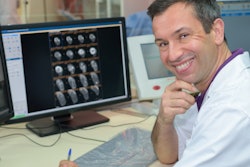
Private equity takeovers of physician practices have definitely increased over the past number of years, but the trend may not be as dramatic as it seems in radiology, according to a research letter published online on February 18 in JAMA.
In fact, although between 2013 and 2016 private equity acquisitions of physician practices increased from 59 to 136 per year, when it came to radiology, the number of takeovers only increased from zero to six.
"Private equity acquisitions of physician practices increased across specialties from 2013 to 2016 but still constituted a small proportion of group physician practices in the United States," wrote a team led by Dr. Jane Zhu of Oregon Health and Science University in Portland.
It's important to understand trends in private equity acquisitions of physician practices, especially because the goals of equity firms tend to be different than those of doctors -- namely, a bigger emphasis on the bottom line, Zhu and colleagues noted. To explore the trends, the researchers used information taken from the Irving Levin Associates Health Care M&A dataset from 2013 to 2016 on U.S. physician group practice acquisitions by private firms.
They found that there were 355 acquisitions of physician practices by private equity firms during that time period, increasing 130% from 59 in 2013 to 136 in 2016. These acquired practices had a mean of four sites and 16 physicians; the majority accepted Medicare (83.4%) and most were in the South (43.9%).
The five most common types of physician practices that were acquired out of the 355 were anesthesiology (69), multispecialty (68), emergency physician (43), family practice (39), and dermatology (35). Radiology came in eighth on the list of 21 specialties, with eight practices acquired during the study timeframe.
| Top 5 types of acquired physician practices, 2013-2016, compared with radiology | ||||
| 2013 | 2014 | 2015 | 2016 | |
| Total practices (355) | 59 | 72 | 88 | 136 |
| Anesthesiology (69) | 10 | 20 | 15 | 24 |
| Multispecialty (68) | 15 | 15 | 19 | 19 |
| Emergency physician (43) | 10 | 6 | 10 | 17 |
| Family practice (39) | 7 | 9 | 6 | 17 |
| Dermatology (35) | 1 | 5 | 11 | 18 |
| Radiology (8) | 0 | 0 | 2 | 6 |
"These data, which show acquired practices to have several sites and many physicians, match private equity firms' typical investment strategy of acquiring 'platform' practices with large community footprints and then growing value by recruiting additional physicians, acquiring smaller groups, and expanding market reach," Zhu's group noted.
Whether the acquisition trend is hot or not in a particular medical specialty, it's worth more research -- especially since private equity goals don't necessarily mesh with patient care, the team concluded.
"Research is needed to understand the effect of these acquisitions and to mitigate unintended consequences," the group wrote. "Private equity firms expect greater than 20% annual returns, and these financial incentives may conflict with the need for longer-term investments in practice stability, physician recruitment, quality, and safety."




















